A bamboo bee house (bee hotel) is a great way to protect and nurture the bee species that are vital for the life of crops. Mason bees do not sting and are very friendly to humans, so you can place the bee house anywhere in your garden. In this article, we will guide you on how to make a mason bee house with bamboo, a cheap, durable and easy-to-find material.
Contents [hide]
1. Mason bees habitat
Mason bees are solitary bees that play a crucial role in pollination. They are named for their behavior of using mud to construct their nests. Providing a suitable habitat for mason bees can encourage their presence and support their important ecological role.
Here are some considerations for creating a mason bee-friendly habitat:
- Nesting Sites:
- Mason bees nest in pre-existing cavities, such as hollow stems, woodpecker holes, or other small openings.
- You can provide nesting sites by placing nesting boxes with appropriately sized holes. These boxes can be made of wood or other materials and should have tubes or holes with diameters between 5/16 and 3/8 inches.
- Bamboo tubes or cardboard tubes bundled together are commonly used for this purpose.
- Location:
- Place bamboo mason bee house in a sunny location, facing south or southeast, to provide warmth and encourage early morning activity.
- Ensure the nesting sites are protected from strong winds and rain to prevent damage.
- Materials:
- Mason bees use mud to build partitions between their nesting chambers. Ensure there is a source of moist mud nearby, such as a shallow tray with damp soil.
- Include a variety of flowering plants in the vicinity to provide food for the bees.
- Flowering Plants:
- Plant a diverse range of flowering plants that bloom at different times of the year to provide a continuous source of nectar and pollen.
- Bees prefer flowers with simple, open shapes that allow easy access to nectar and pollen.
By creating a mason bee-friendly habitat, you contribute to the conservation of these important pollinators and enhance the overall biodiversity of your garden or local environment.
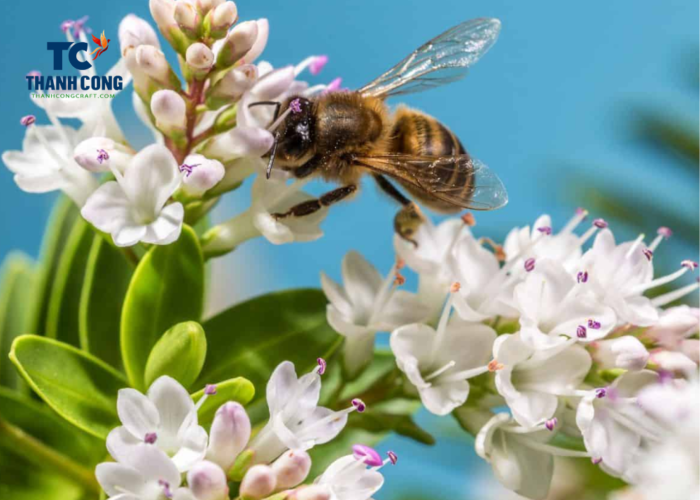
2. How to make a mason bee house with bamboo?
A mason bee house is a great way to protect and nurture the native bees, who play an important role in pollinating flowers and crops.
To build a mason bee house with bamboo, you will need the following materials:
- The plastic bottle should have a length of 20-25 cm and a diameter appropriate for the number of bamboo tubes you intend to use.
- Bamboo tubes with diameters from 4 to 10 mm and lengths from 15 to 20 cm.
- Drill and a drill bit with a size suitable for the diameter of the bamboo tube.
- Tape or rope to tie the bamboo tubes together.
- Hook or wire to hang the bamboo bee house.
The steps are as follows:
Step 1
Prepare bamboo tubes with diameters ranging from 4 to 10 mm and lengths of approximately 15-20 cm. Use a drill bit to remove the nodes from one end of each bamboo section. This creates a clear entrance for the mason bees.
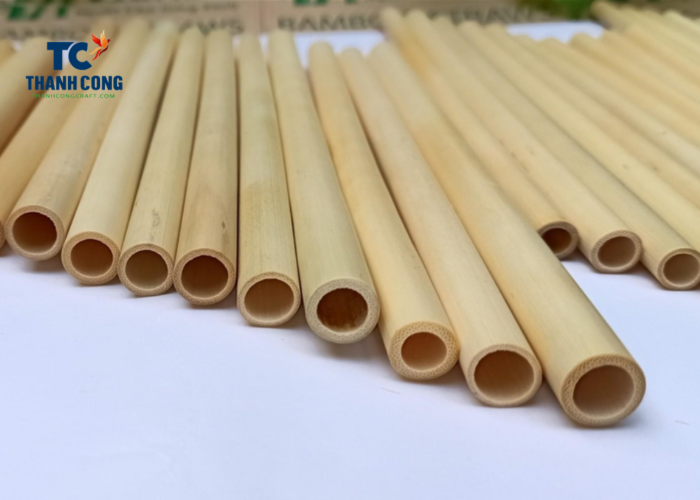
Step 2
Cut plastic bottles so that their length matches the length of the bamboo tubes, around 15-20 cm. Use tape to cover the cut edges of the bottles to to ensure they are smooth and won’t harm the bees.

Step 3
Use pliers or a knife to create a small hole at the bottom of the prepared plastic bottles from step 2. Then, thread a string through it to hang the bee house in any location you desire.
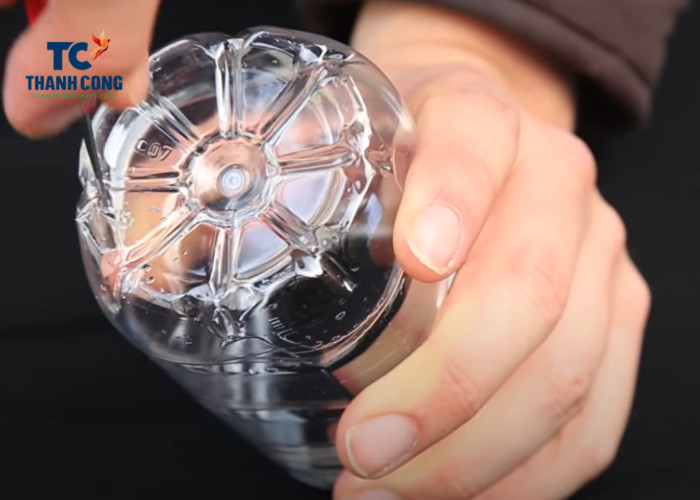
Step 4
Arrange the prepared bamboo tubes into the plastic container, ensuring they are close together but not tightly packed. This creates a structure that mimics a natural nesting site. You can also insert small dry branches into the gaps of the bee house to enhance its bee-friendliness.
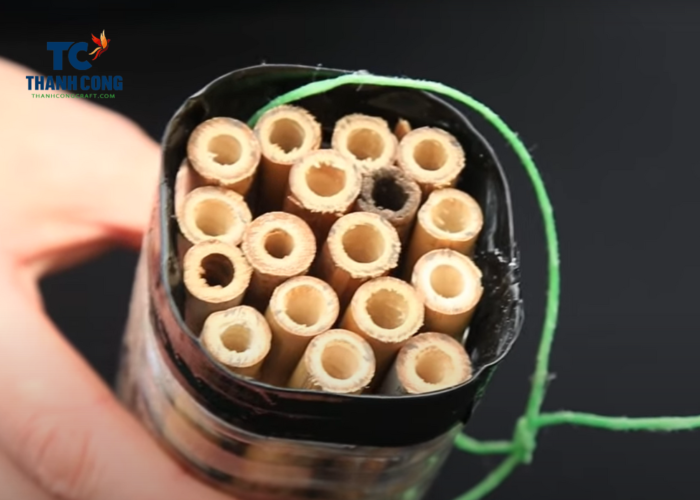
Step 5
Hang the mason bee house in a sunny, dry, and peaceful location. Suspend the bamboo bee house approximately 1.5 to 2 meters above the ground, facing south or southeast, ensuring it’s securely attached to prevent swinging. Avoid placing the mason bee house near water sources, tall trees, or areas frequented by predatory birds.
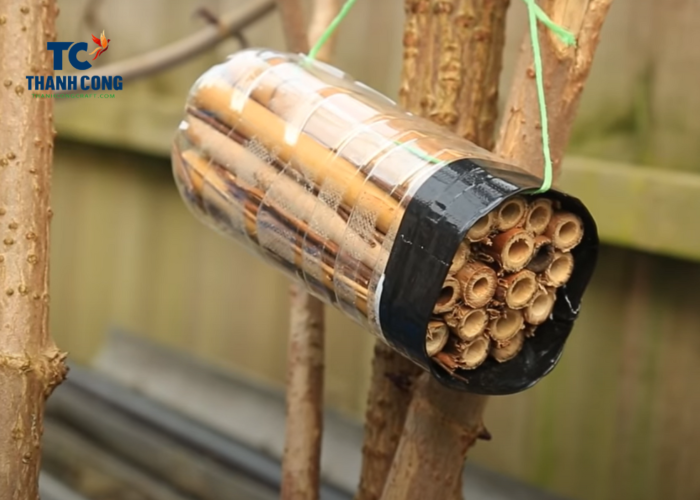
3. FAQs
3.1 Is bamboo good for bee hotels?
Yes, bamboo is an excellent material for constructing bee hotels, especially for solitary bee species like mason bees. Bee hotels, also known as bee houses or nesting blocks, provide artificial nesting sites for solitary bees to lay their eggs.
Bamboo stems have hollow sections, creating natural tube-like structures that are ideal for solitary bees to lay their eggs. These tubes mimic the natural nesting sites that solitary bees seek out in the wild.
Bamboo comes in various diameters, allowing you to create nesting holes that cater to different bee species. Solitary bees often have preferences for specific hole sizes, and bamboo provides a range of options.
3.2 What smell attracts bees?
Bees are attracted to a variety of smells, primarily those associated with flowers and nectar. The specific scents that attract bees can vary depending on the type of bee and the flowers they prefer. Some general scents that attract bees include:
- Floral Fragrances: Bees are highly attracted to the sweet and pleasant scents produced by flowers. Different flowers emit distinct fragrances that can entice bees, such as lavender, roses, and sunflowers.
- Nectar Scents: The scent of nectar itself is a powerful attractant for bees. Flowers produce nectar to entice bees and other pollinators to visit, ensuring the transfer of pollen for plant reproduction.
- Fruit Scents: Certain fruits emit fragrances that appeal to bees. Citrus fruits, berries, and stone fruits are examples of fruits that may attract bees with their sweet and fruity scents.
- Herbal Scents: Some herbs produce scents that attract bees. For instance, the aromatic oils in herbs like mint, basil, and thyme can be appealing to bees.
- Pheromones: Bees also use pheromones to communicate with each other. For example, a bee returning to the hive with a load of nectar may release pheromones to signal other bees to follow the same foraging route.
It’s important to note that bees have a keen sense of smell and are particularly sensitive to the ultraviolet patterns and colors of flowers. The combination of visual cues and enticing scents helps guide bees to the flowers that provide the nectar and pollen they need for sustenance.
3.3 How do you attract mason bees to a bee house?
To attract mason bees to your bee house, you need to create a friendly and suitable environment for them. Some basic steps you can do are:
- Choose a sunny, dry and wind-protected location for your bee house. Mason bees like warm temperatures and avoid moisture.
- Provide bamboo, wood or cardboard tubes with diameters from 5 to 10 mm and lengths from 15 to 20 cm for mason bees to lay eggs. You should seal one end of the tubes to prevent predators from entering.
- Plant flowers with abundant nectar and bright colors near the bee house. Mason bees like flowers such as daisies, roses, lavender, carnations and sunflowers.
- Keep the bee house clean and replace damaged or infected tubes. You should check the bee house regularly and remove harmful insects such as ants, flies and beetles.
- Respect the space and privacy of mason bees. You should not disturb, touch or move the bee house when they are active. You should also avoid using toxic chemicals such as pesticides or herbicides near the bee house.
In conclusion, crafting a diy bamboo mason bee house is a fulfilling and eco-friendly project that not only serves as a creative endeavor but also contributes to the well-being of these essential pollinators.
By following the steps outlined in “how to make a mason bee house with bamboo“, you can provide a welcoming habitat for mason bees, enhancing biodiversity in your garden and promoting sustainable practices.
If you have any further questions, don’t hesitate to send thanhcongcraft an email us at info@thanhcongcraft.com or message us at WhatsApp: +84967485411. Hope to serve you soon! Best regard!


